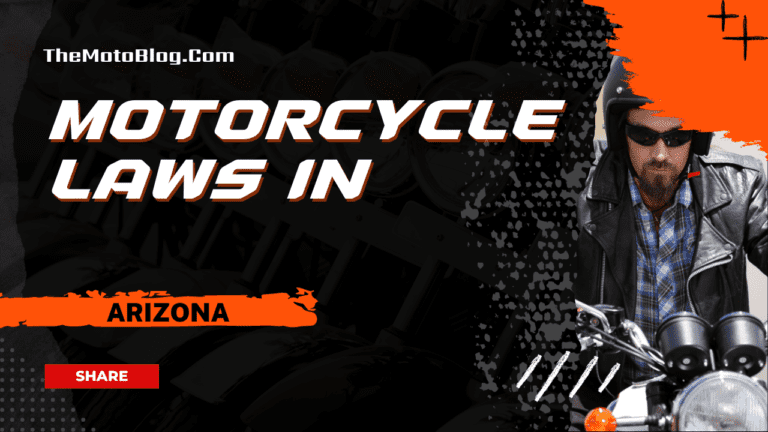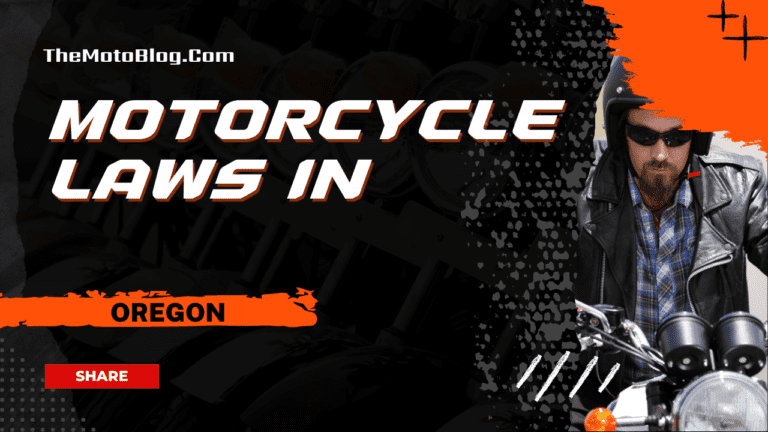Motorcycle Laws in Washington: Your Comprehensive Guide to Legal Riding
Navigating the scenic routes from Oregon’s coastal highways to Idaho’s mountain passes, Washington state stands as a motorcyclist’s paradise with its diverse terrain and breathtaking landscapes. Whether you’re planning to explore the scenic routes of Washington or just passing through from neighboring Montana, understanding the state’s motorcycle laws is crucial for both safety and legal compliance. This comprehensive guide breaks down Washington’s motorcycle regulations, ensuring riders can focus on enjoying the journey while staying within the legal framework.

| Requirement | Rule |
|---|---|
| License Type | Class M endorsement required |
| Minimum Age | 16 years old |
| Helmet Law | DOT-approved helmet mandatory for all riders and passengers |
| Eye Protection | Required unless motorcycle has windshield |
| Lane Splitting | Prohibited |
| Handlebar Height | Maximum 30 inches above seat |
| Headlight Use | Must be on at all times |
| Insurance Minimum | $25,000/$50,000 bodily injury, $10,000 property damage |
| Mirrors | At least one required (two recommended) |
| Turn Signals | Required for post-1960 motorcycles |
| Passenger Age | Must be 5 years or older |
| Sound Limits | 78 dBA (≤45 mph), 82 dBA (>45 mph) |
| Group Riding | Maximum two motorcycles side-by-side per lane |
| Footrests | Required for both rider and passenger |
| License Plate | Must be displayed and valid |
| No Endorsement Fine | Minimum $386 |
| Equipment Check | Fenders, lights, and brakes must be functional |
| Registration | Required with Department of Licensing |
| Insurance Proof | Must be carried at all times |
| Basic Equipment | Working headlights, taillights, brake lights required |
Essential Licensing Requirements
Every motorcyclist in Washington must obtain proper licensing before hitting the road. The state requires a Class M endorsement on a valid driver’s license, which can be obtained at age 16 or older. Riders must complete both basic and advanced knowledge tests, along with skills assessments, to demonstrate competency.
For beginners, instructional permits are available to those 16 and older who either complete a state-approved motorcycle safety course or successfully pass the written examination.
Mandatory Safety Equipment
Washington takes rider safety seriously through strict helmet laws and equipment requirements. All riders and passengers must wear DOT-approved helmets that meet FMVSS No. 218 standards. Eye protection is mandatory unless the motorcycle has a windshield, with riders required to wear either goggles, glasses, or a face shield.
Operating Guidelines
Lane usage rules in Washington are clear and strict. Motorcycles have the right to full lane usage, but lane splitting is explicitly prohibited. Handlebar height restrictions mandate a maximum of 30 inches above the seat. Additional requirements include:
- Always-on headlight operation
- Mandatory turn signals for post-1960 motorcycles
- At least one mirror (both recommended)
- Footrests for both rider and passenger
Insurance and Coverage Requirements
All motorcyclists must maintain minimum liability coverage:
- $25,000 for bodily injury per person
- $50,000 for bodily injury per accident
- $10,000 for property damage
Vehicle and Equipment Specifications
Washington enforces specific equipment standards, including sound level restrictions of 78 dBA at speeds up to 45 mph and 82 dBA above that speed. Motorcycles must have:
- Fenders on both wheels
- Functional headlights, taillights, and brake lights
- Compliant exhaust systems
Passenger Regulations
Passenger safety is strictly regulated. Riders cannot carry passengers under age 5, and all passengers must:
- Wear DOT-approved helmets
- Have access to proper seating and footrests
- Follow all applicable safety requirements
Documentation and Registration
Proper documentation is essential. Motorcyclists must:
- Register their motorcycle with the Washington Department of Licensing
- Display a valid license plate
- Carry current proof of insurance
Group Riding and Traffic Rules
When riding in groups, Washington allows a maximum of two motorcycles to ride side-by-side in a single lane. All standard traffic laws apply to motorcycles, including speed limits and right-of-way rules.
Enforcement and Penalties
Operating without proper endorsement carries significant penalties, including a minimum fine of $386 and possible vehicle impoundment.
While Washington’s motorcycle laws may seem extensive, they’re designed to create a safer riding environment for everyone on the road. As you venture through the Pacific Northwest, remember that regulations can vary significantly as you cross state lines. Whether you’re heading south to experience Oregon’s spectacular rides, east to explore Idaho’s mountain routes, or planning a longer journey into California, staying informed about local laws is as important as maintaining your motorcycle. By following these regulations and prioritizing safety, you can fully embrace the freedom and adventure that motorcycle riding in Washington state has to offer.
Motorcycle Laws in the US By States
If you liked this article, then please subscribe to our YouTube Channel for more Bike Videos. You can also find us on Instagram, Twitter and Facebook.
Disclosure: As an Amazon Associate, I earn from qualifying purchases. Read more about Amazon Affiliate Disclaimer.

Vishwanath Mathpati
I am Vishwanath Mathpati, a full-time Blogger and Motorcyclist from Bidar, Karnataka. I love writing about my Motorcycles Stories and Riding Gears on this blog.
Know More About Me.







